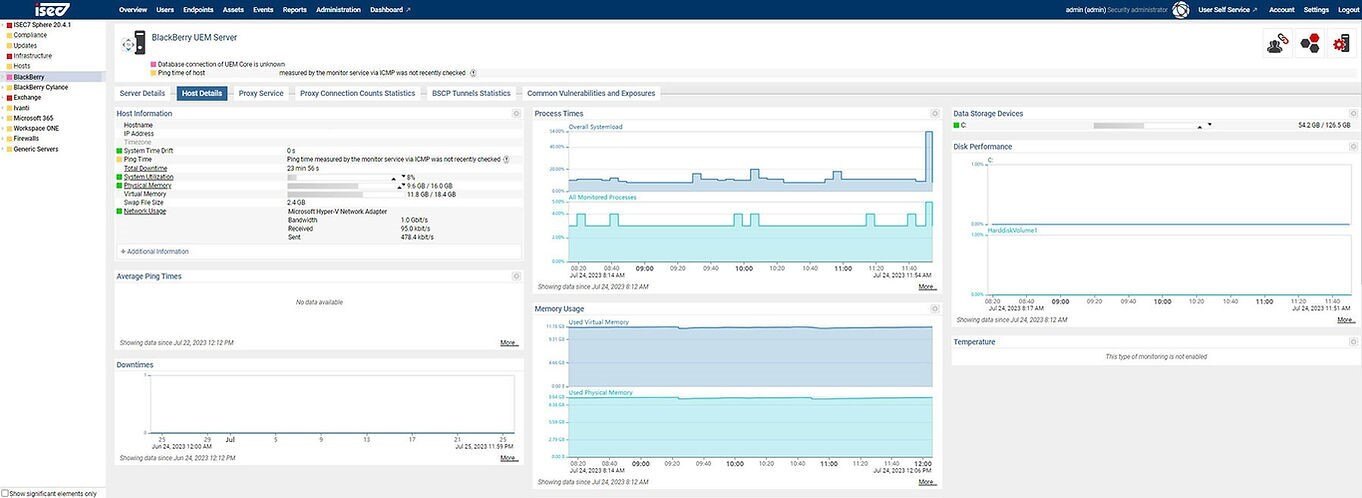Demystifying Cybersecurity: Top 10 Types of Cybersecurity Attacks and How to Mitigate Them, Part 2

4. Denial-of-Service (DoS)
A Denial of Service (DoS) attack is a malicious attempt to disrupt the normal functioning of a target system, network, or service by flooding/bombarding/blasting it with enormous amounts of illegitimate traffic, overloading its resources and rendering it inaccessible to legitimate users.
Typically, attackers utilize botnets, which consist of networks of compromised computers, to orchestrate the attack, amplifying its impact. By flooding the target with an excessive volume of requests, such as HTTP requests or connection requests, the attacker exhausts available bandwidth, processing power, or memory, causing the system to slow down or crash. This disrupts the normal functioning of the target, leading to downtime and preventing legitimate users from accessing the services provided by the targeted system or network.
In terms of scale, we can typically identify two types of attacks: DoS attacks coming from a single system, and Distributed Denial of Service (DDoS) attacks, orchestrated from multiple systems. The latter pose greater challenges as they are harder and more complex to block than DoS attacks, demanding identification, and neutralization of multiple systems to cease the assault.
A practical example of a DoS attack could be against OpenDNS servers, where an attacker could exploit vulnerabilities in the Domain Name Server (DNS) protocol to flood their servers with a massive volume of forged DNS queries, overloading OpenDNS infrastructure's capacity to process legitimate DNS requests effectively, with their servers becoming inundated with this flood of malicious traffic, leading to slowdowns or complete unresponsiveness. Therefore, legitimate users, including employees relying on OpenDNS for DNS resolution, would experience difficulties accessing websites and services, impacting their ability to perform essential tasks requiring internet access.
Illustration of a Denial of Service (DoS) attack against public DNS servers.
What to do?
Implement DDoS Protection
To both prevent and mitigate the risks associated with such attacks, organization should consider using advanced Distributed Denial-of-Service (DDoS) protection solution, including both on-premises appliances and cloud-based services, which are particularly effective as they can absorb and disperse the vast amounts of traffic DDoS attacks generate before it reaches their network; these services adapt to evolving attack techniques, offering a dynamic defense mechanism that is crucial given the ever-changing nature of cyber threats.
Enhance Network Architecture
Designing a resilient network architecture, by creating redundant network paths, and ensuring failover capabilities allowing traffic to be rerouted in the event of an attack, can significantly reduce the impact of DoS attacks. Load balancers can distribute incoming network traffic across multiple servers, minimizing the pressure on any single server and maintaining service availability even under load.
Implement Continuous Monitoring
Continuous monitoring of network traffic allows for the early detection of unusual traffic peaks, which could indicate a DoS attack. We recommend implementing a vendor-agnostic, supervision solution like ISEC7 SPHERE, often compared with Security Information and Event Management (SIEM) solutions. Event log monitoring and management is only one integral component of ISEC7 SPHERE, which is used to collect, aggregate, correlate, and analyze security event data from many types of systems, from web and mail servers to Unified Endpoint Management (UEM) solutions, as well as cybersecurity suites used for Threat Detection, Prevention and Response (EPP, EDR, and MTD). Data can be collected or received from several sources, including hardware devices, virtual machines, security appliances, and software and services running within the solution network(s), offering Continuous Monitoring of the whole infrastructure.

Incident Response Plan
Have a comprehensive incident response plan in place to address DoS attacks, including procedures for rapid assessment and diagnosis of the traffic anomaly, communication strategies within the organization and with external entities like Internet Service Providers (ISPs) as well as documented steps to follow to mitigate an ongoing attack.
5. Spoofing (Domain, Email, ARP…)
A spoofing attack is a type of cyberattack where an attacker impersonates a legitimate entity or source to deceive users, systems, or networks. The attacker manipulates information to appear as if it originates from a trusted source, aiming to gain unauthorized access, steal sensitive information, or bypass security measures.
Main Types of Spoofing Attacks
There are different forms of spoofing attacks, the most common being:
IP Spoofing
The purpose of an IP spoofing attack is to deceive a target system by falsifying the source IP address of network packets, making them appear as if they originate from a trusted source or a specific location. This technique is commonly used by attackers to bypass security measures, launch Distributed Denial-of-Service (DDoS) attacks, or conduct network reconnaissance without revealing their real identity.

Illustration of an IP spoofing attack.
Email Spoofing
Perpetrators forge email headers or sender addresses to make emails appear as if they are from legitimate sources, aiming to trick recipients into disclosing sensitive information or downloading malware.
Domain Spoofing
Attackers create fake websites that closely resemble legitimate ones to deceive users into entering personal information, such as login credentials or credit card details.
ARP Spoofing
In spoofing, attackers manipulate Address Resolution Protocol (ARP) messages, used to map IP addresses to MAC addresses within a local network communication, to associate their MAC address with the IP address of a trusted device, enabling them to intercept or modify network traffic.

Illustration of an ARP spoofing attack.
DNS Spoofing
Also known as DNS cache poisoning, attackers manipulate DNS resolution process to redirect users to malicious websites by providing false DNS information, compromising the integrity of the DNS system.
 Illustration of a DNS spoofing attack.
Illustration of a DNS spoofing attack.
What to do?
Spoofing attacks exploit vulnerabilities in communication protocols or weaknesses in authentication mechanisms, emphasizing the importance of implementing robust security measures to detect and mitigate such threats.
To prevent and mitigate various types of spoofing attacks, such as IP, email, domain, ARP, and DNS spoofing, an organization can implement the following measures.
IP Spoofing
To prevent and mitigate IP spoofing attacks, organizations should segment their network infrastructure, using a combination of technologies such as firewalls and Virtual Local Area Network (VLANs) to enforce security boundaries between different segments of your network. Firewalls help regulate and monitor traffic between network segments, allowing you to define and enforce specific rules for communication. VLANs allow logically segment a single physical network into multiple virtual networks, each with its own set of rules and access controls. Used in combination, these provide layers of defense that help prevent unauthorized access and contain potential security breaches.
They should also implement a combination of filtering, monitoring, and secure configuration practices. This includes implementing ingress and egress filtering on routers ensures that only packets with legitimate source addresses enter or leave the network, blocking those with spoofed IP addresses, as well as using Intrusion Detection and Prevention Systems (IDPS) can help detect and block suspicious traffic patterns indicative of IP spoofing.
Finally, regularly updating and patching network devices helps close vulnerabilities that could be exploited in spoofing attacks.
To prevent and mitigate email spoofing attacks, an organization should implement several layered security measures. First, deploying email authentication protocols like Sender Policy Framework (SPF), DomainKeys Identified Mail (DKIM), and Domain-based Message Authentication, Reporting & Conformance (DMARC) is essential for verifying the legitimacy of email senders and preventing forged addresses.
Advanced email filtering solutions can further identify and block suspicious emails. Implementing strong password policies and multi-factor authentication (MFA) for email accounts reduces the risk of unauthorized access.
Also, educating employees on recognizing phishing and spoofing attempts enhances their ability to identify and report malicious emails. Regularly updating and patching email systems and software ensures vulnerabilities are addressed promptly. Additionally, monitoring and analyzing email traffic for anomalies can help detect and respond to spoofing attempts in real-time. Combining these measures significantly enhances an organization's defenses against email spoofing attacks.
Domain & DNS
To prevent and mitigate DNS spoofing attacks, an organization should implement several key measures focused on securing DNS infrastructure. Implementing DNS Security Extensions (DNSSEC) is crucial, as it adds an authentication layer to DNS responses, ensuring that the data received from DNS queries is not tampered with. Additionally, organizations should monitor DNS traffic for anomalies and unusual patterns, which can indicate potential spoofing attempts. Regularly updating and patching DNS servers and software helps close vulnerabilities that could be exploited by attackers. Finally, using reputable DNS providers with strong security measures and redundancy can further enhance the resilience of DNS infrastructure against spoofing attacks.
6. Man-in-the-Middle (MitM)
A Man-in-the-Middle (MitM) attack is a type of cyberattack where an attacker intercepts and potentially alters communications between two parties without their knowledge. The attacker positions themselves between the communicating parties, allowing them to eavesdrop on the communication or even manipulate the data being exchanged. This attack can occur in various forms, including on networks, Wi-Fi connections, or through compromised devices. 
What to do?
Enforce Encryptions for All Your Communications
Enforcing encryption of data in transit for all communications is crucial in preventing Man-in-the-Middle (MitM) attacks because it ensures that any data exchanged between parties is securely transmitted, making it unintelligible to unauthorized interceptors. By encrypting the data, even if an attacker manages to intercept the communication, they would be unable to decipher its contents without the proper decryption keys. This protection is essential for maintaining the confidentiality and integrity of sensitive information, such as personal details, financial data, and login credentials, thereby safeguarding against eavesdropping, data theft, and tampering. Robust encryption protocols, such as Transport Layer Security (TLS), provide a secure channel that mitigates the risks associated with MitM attacks, ensuring that data remains private and unaltered during transit.
Perform a Cryptographic Inventory
Perform a cyber risk discovery and cryptographic inventory using a cryptographic monitoring and risk assessment tool like Quantum Xchange™ CipherInsights, to monitor your network and identifies cryptographic vulnerabilities in real time, including unencrypted traffic, clear-text passwords, expired certificates, self-signed intermediate certificate authorities, insecure encryption, providing a clear understanding of your cybersecurity posture and a prioritized list of risk mitigation to maintain compliance, pass audits, and better prepare for the inevitable migration to Post-Quantum Cryptography (PQC).


Implement Post-Quantum Resiliency
Implementing post-quantum resiliency is crucial in preventing Man-in-the-Middle (MitM) attacks due to the impending threat posed by quantum computers, which will be capable of breaking current cryptographic algorithms that underpin data security. Traditional encryption methods, such as RSA and ECC, rely on the difficulty of factoring large numbers or solving discrete logarithm problems—tasks that quantum computers can perform exponentially faster with algorithms like Shor's. As a result, encrypted communications could be decrypted in real-time, rendering them vulnerable to MitM attacks.
Post-quantum cryptography employs algorithms that are resistant to quantum attacks, ensuring that even with the advent of powerful quantum computing, the integrity and confidentiality of data in transit are maintained, securing communications against future vulnerabilities and safeguarding sensitive information.
Quantum Xchange™ Phio TX is the first quantum-safe key encryption key delivery product that can combine all post-quantum technologies, to enable encrypted, fault-tolerant, and load-balanced key transmissions over any distance, any medium, and to multiple transmission points, using Post-Quantum Cryptography (PQC) to secure communication channels and integrating with entropy sources for truly random key generation, ensuring not your organization’s communications are securely from ever-growing post-quantum attacks.


QuantumXchange™ Phio TX architecture.
Now that we have covered the first half of the top 10 cybersecurity attacks, you have learned about how these threats can be mitigated not only through training, but also continuous monitoring, post-quantum resiliency, encryption, and having incident response plans in place. The team at ISEC7 can complete a security assessment for your organization and help you navigate the options available to you, leverage your existing solutions to their fullest capability, and tailor a digital workplace that suits your unique environment; ISEC7 will ensure that your organization’s cyber hygiene and security posture remain strong and endure through best practices. Stay tuned for our next blog post that will conclude this series by highlighting the last few types of cybersecurity attacks, including code injection, supply chain, DNS tunneling, and zero-day exploits.
Tags: #cybersecurity #cyberattack #cyberawareness #denialofservice #DDoS #continuousmonitoring #spoofing #maninthemiddle #MitM #postquantumcryptography #PQC


-1.png)
.png)
